This list features the top 20 players in the history of the Montreal Expos. Just Expos…not the Nationals, which is where this franchise moved for the 2005 season.
The Expos never won a pennant, and they only made the playoffs once. Labor issues and player strikes played a big role in their fortunes: in 1981 when the season was split by a strike, the Expos won the NL East and were narrowly defeated for the NL flag. In 1994, the Expos had the best record in the National League when play was halted in early August due to a players’ strike. That team was soon disbanded, most of their stars sold off or traded.
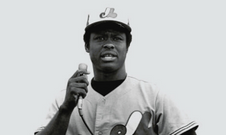
In the mid-1970s, the Expos welcomed three young outfielders to Montreal, each of them fast, each of them with a good bat. Cromartie was the left fielder and the oldest, born in September of 1953. Andre Dawson and Ellis Valentine were ten months younger, but by 1977 all three of them were in place in the outfield. Manager Dick Williams counted his blessings for getting the young trio, but he treated them differently.
“Cro” was the least accomplished outfielder. He struggled to field balls hit over his head, and he had a weak throwing arm. Williams liked to take Cromartie out of the game in the 7th or 8th inning for a defensive replacement, something that irked his young outfielder, who desperately wanted to play every inning of every game.
Dawson was dubbed “Hawk,” and he could do it all in center field. He had a right fielder’s throwing arm, and one of the reasons his defensive stats look so good when he was in the outfield with Cro was that he made an effort to take balls that were between them. Dawson knew he was more surehanded and strong-armed.
The right fielder, Valentine, may have had the strongest arm in baseball in the 1970s. It was either him or Dave Parker, or maybe Dwight Evans. But Valentine made throws that were eye-popping, regardless. Basically after he won the Gold Glove in 1978, runners stopped trying to take bases on Valentine.
Cromartie was the slap-hitter of the three: he never hit more than 14 homers in a season. But the left-handed batter hit 40 doubles twice, thanks in large part to the quick carpet at Olympic Stadium. Eventually Cromartie’s defensive deficiencies caused the Expos to move him to first base. He was always keen on earning money, so he jumped to Japan and played three years over there, ending his run with Montreal after the 1983 season.

Most Wins by a Left-Hander, Montreal Expos History (1969-2004)
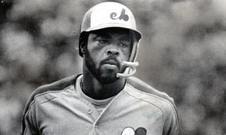
See the Warren Cromartie comment above.
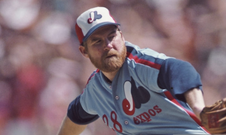
The MLB Draft used to be a lot different. Example being: in 1973 the St. Louis Cardinals selected Smith in the 49th round with the 779th pick in the draft. They used to draft for a long time back then.
Smith was the type of pitcher you would never see in the big leagues today: he didn’t strike out hitters and he didn’t have a lot of spin on his fastball. He was a bear of a man, over 6’2 and 200 pounds, but he pitched like a control specialist. He went 18-5 in 1985, but actually had a better season in 1989 when he went 10-11 with a 2.84 ERA for a terrible Expos’ team.
Smith once told a reporter that he didn’t like playing in Montreal because “I have to drive 60 miles to the U.S. to get a bag of Doritos.”

Vidro was a near carbon copy of Carlos Baerga, who was also a switch-hitting second baseman from Puerto Rico. The two were six years apart in age: Vidro was more patient at the plate, but Baerga was steadier with the glove. Both players hit .300 several times, and were popular with the fans and teammates. They were teammates on the 2005 Washington Nationals.
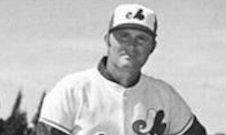
A slew of teams got into a bidding war over Fairly when he was a hotshot prospect out of the University of Southern California in the late 1950s. They were right to fight over him: Fairly played 21 years in the majors and was a useful player who collected nearly 2,000 hits and won three World Series with the Dodgers in the 1960s.
He was a redhead and bore a striking resemblance to Rusty Staub. He was one of Smoky Alston’s favorite players, because Fairly could play all three outfield spots or first base with reliability. He smacked a pair of homers in the 1965 World Series, but his biggest hit came in Game Four when he delivered a two-run single to break open the game as the Dodgers tied the series. Fairly bridged the gap between the 1950s Boys of Summer Brooklyn Dodgers and the 1960s LA dynasty. He was traded to the Expos (where he was a teammate of Staub) and later played for the Blue Jays, becoming the first player to be an All-Star for both Canadian teams.
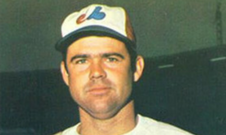
Bailey was a heralded prospect out of high school in Long Beach, California in 1961. The Pirates won the bidding war for the teenager, and signed him for more than $125,000. That big chunk of change would stay hung around Bailey’s neck for a while, as the media, some teammates, and opposing players never failed to let him know how much money he got before he even knew how to be a big leaguer.
But Bailey got sort of the last laugh: he played 17 years in the major leagues in nearly 2,000 games, and he hit 189 home runs. He never made an All-Star team (only Todd Zeile played more MLB games without being named to an All-Star roster), but Bailey did contribute as a solid regular for several seasons. He spent seven years, his best years, as a Montreal Expos, when they were a nascent franchise. In 1970 the third baseman hit 28 home runs.
Bailey was the best third baseman the Expos ever had until Larry Parrish came along. And then Tim Wallach came along, and so on.
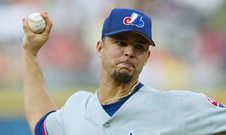
For about three decades, the winningest Puerto Rican-born pitcher in MLB history was Juan Pizarro, who won 131 games. Pizarro actually won more than 400 games if you tally his victories in the Puerto Rican leagues and Mexican leagues. He was a rubber-armed lefty who was a little wild, both with his pitches and his lifestyle.
“Yeah, I love to cel-e-brate,” Pizarro said. “I only remember the parties, the women, the hot times.”
Vazquez broke Pizarro’s record and eventually won 165 games, though he also took the “L” 160 times. He was a fastball pitcher who struck out 100 batters in each of his 14 season, plying his trade for six teams.
They called Vazquez, “The Silent Assassin” because he was so damn quiet. Once, when he got a new teammate in midseason, the teammate mistook Vazquez for a batboy because he said so little and blended into the clubhouse so well.
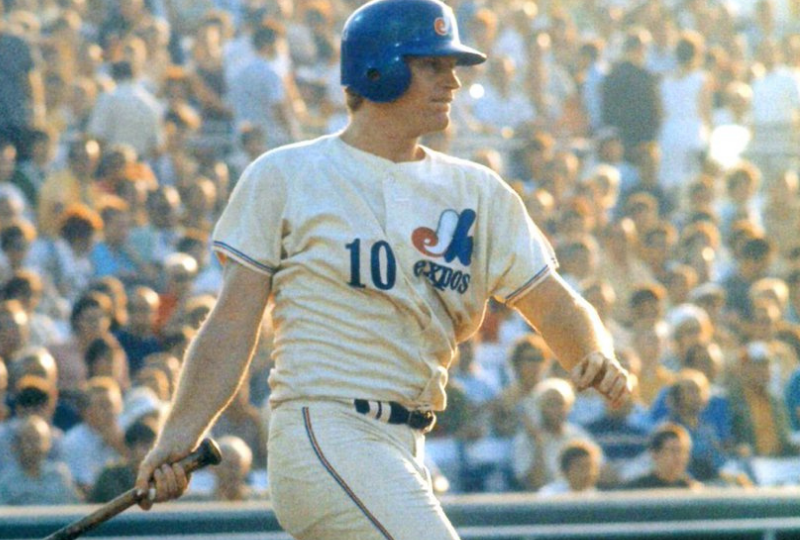
Prior to the 1969 season, when the Astros traded Staub to the Expos for Jesus Alou and Donn Clendenon, a crisis ensued that challenged the authority of the commissioner.
The Astros were trading Rusty because they had a glut of corner outfielders. Staub had moved to first because (1) he was slow on the artificial turf in the new Astrodome and (2) he was slow in general.
The commissioner was delighted with the deal because it sent a popular, talented player to the expansion Expos prior to their first season. The problem started when Clendenon decided to take a high paying sales job with a pen manufacturer rather than report to Houston. Yes, really.
The Astros cited the rule that said if a player retired within 31 days of a deal, the trade was void. They wanted Staub back. Commissioner Bowie Kuhn refused. He fumbled things really, first ruling that Clendenon never officially retired, but after he was confronted with evidence contrary to that position, he ruled that he wasn’t accepting Clendenon’s retirement. That caused a Texas-sized furor in Houston. Kuhn wanted Rusty in Quebec, and he would do anything to ensure the redhead ended up in a Montreal uniform.
Eventually, Kuhn forced the teams to restructure the deal, and it stuck. The French-speaking Rusty (he learned the language in his native New Orleans) went on to become the first star north of the border. “Le Grande Orange” embraced the cuisine and culture of the European-style city, and he was beloved in Montreal the remainder of his life. Many folks in Houston never forgave Kuhn for forcing the deal.

The Expos drafted White in the first round of the 1990 MLB Draft, the same year Marquis Grissom, Larry Walker, and Delino DeShields debuted. The following year, Montreal drafted Cliff Floyd. The Expos fed their farm system a tasty diet of talent for several years from the late 1980s into the 1990s.
White won the center field job, and played alongside Moises Alou and Vlad Guerrero for a few years. He played 15 seasons but only appeared in as many as 120 games six times, and never had a great season. He was on the disabled list so often in Montreal that they took to calling him “RonDL” White. He was also implicated in the use of banned substances.
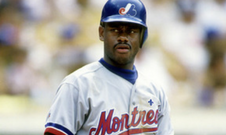
When he was a kid growing up in a suburb of Atlanta, Grissom threw a rock that struck a police car from a significant distance. The officer was so impressed by the toss that he didn’t collar Little Marquis, instead convincing him to join the baseball team the policeman coached.
Grissom succeeded Tim Raines as Montreal’s leadoff batter, and for a few seasons he stole bases like Raines once did, though he was not in the same class as an overall offensive performer. He saved his best for the big stage. In three World Series, Grissom had 30 hits in 19 games, and got on base 37 times. He batted .390 in the Fall Classic, appearing twice for his hometown Braves and once for the Indians. He was also named MVP of the AL Championship Series in 1997 and had an amazing 11 hits in four games and batted .524 in the NL Division Series in 1995.
Grissom had a way with endings. He caught the final out of Dennis Martinez’s perfect game, caught the fly ball that clinched the pennant in 1995, and also caught the ball in center field that ended the Fall Classic that year, giving the Atlanta Braves their first championship.

The greatest pitcher to ever wear an Expos’ jersey was Randy Johnson, but he only appeared in 11 games for Montreal. Pedro is the greatest pitcher they ever really had: but he didn’t stay in Quebec long enough to accumulate the WAR to be in the top five.
Martinez’s fingers were double-jointed, which gave him the ability to grip a baseball in ways most pitchers could not. His “Bugs Bunny” changeup was a result of his circle-change grip and the flexibility of his fingers.
“A changeup is going to be good if you have a good fastball. If you don’t have a good fastball,” Pedro said. “It doesn’t matter how much you rotate [your changeup], how much you can spin it. If you can’t bring a good fastball with it, it makes no difference. I was lucky enough to have both.”
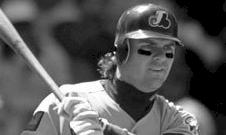
The All-Canadian Team
C: Russell Martin
1B: Joey Votto
2B: Dave McKay
SS: Frank O’Rourke
3B: Corey Koskie
LF: Jeff Heath
CF: Jason Bay
RF: Larry Walker
DH: Justin Morneau
PH: Matt Stairs
SP: Ferguson Jenkins
SP: Ryan Dempster
SP: Russ Ford
SP: Kirk McCaskill
SP: Reggie Cleveland
RP: John Hiller
RP: Eric Gagne
RP: Paul Quantrill
RP: Jesse Crain
Reggie Cleveland was born in a Canadian town called Swift Current. Which I can imagine is a difficult place to swim. He never pitched in Cleveland, and he never had a candy bar named after him. He did surrender the first career hit to both Alan Trammell and Lou Whitaker.
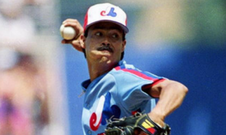
In seven revitalized seasons after Baltimore dealt Martinez to the Expos, the righty averaged 31 starts and 14 wins in an Expos uniform. He matured into a team leader, a mentor to young Latino teammates, and a fan favorite in Quebec. He tossed a perfect game and he was a four-time All-Star after the trade, the last time at the age of 41. When Martinez finally retired at the age of 44, he was the winningest Latino pitcher of all-time.
Martinez credited a new approach to his success in Montreal: he mixed his pitches better. “When I was drinking I used to think I was good,” Martinez said. “I used to just try and throw the ball past the hitter. Now I think. I focus on the weakness of the hitter.” Martinez learned to trust his secondary pitches. When he threw his perfect game against the Dodgers, he got the dangerous Eddie Murray out on a diet of changeups.
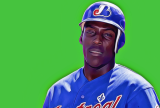
As unique a player as we’ve seen the last 50 years. Vlad Guerrero could hit pitches that bounced in the dirt, pitches that were up around his neck, and pitches one foot outside. He never met a fastball he didn’t like.
Guerrero’s best assets were his bat speed, ability to hit for power to the opposite field, and his throwing arm. He is arguably the most gifted player the Expos have ever had, though Tim Raines and Andre Dawson are in that same conversation.

There was always someone overshadowing Tim Wallach, whether it was Mike Schmidt (the only National League third baseman who was better in the 1980s), or teammates Gary Carter, Andre Dawson, and Tim Raines. Still, Wallach was very good, both at the plate and in the field, you just wouldn’t know it unless you somehow had a way to watch the Montreal Expos back then.
The Expos jettisoned Larry Parrish in his prime to make room for Wallach, who had been the best college player in the country his senior year at Cal State Fullerton, leading them to a victory in the College World Series in 1979. Montreal got Wallach with the tenth selection in the June draft, one pick after the White Sox picked third baseman Steve Buechele, who played high school ball in Anaheim. Buechele would probably rank about 106th on this list.
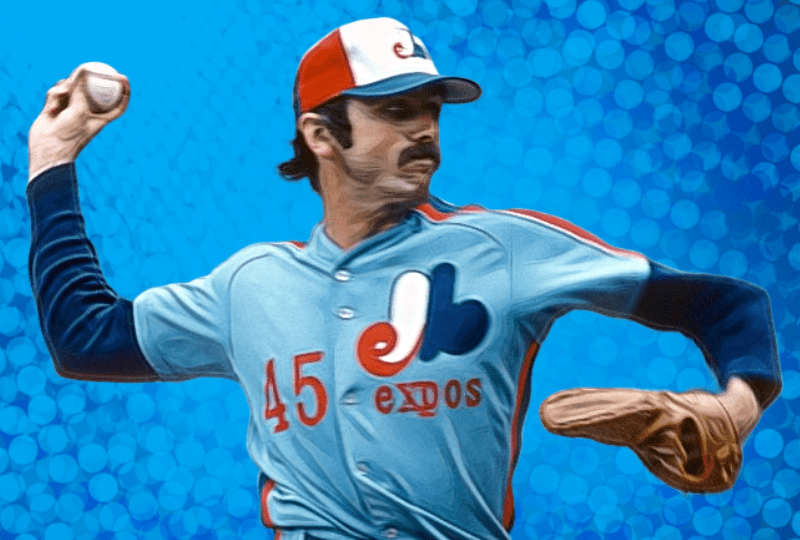
Not the most talented pitcher the franchise has ever had, but the most prolific, and still an excellent performer. He came along when the Expos were still laughingstocks in the league, and helped drive them to relevance in the late 1970s and 1980s.
In 1978 Rogers was involved in an altercation with Montreal general manager Charlie Fox. Before a game in July, Fox was having a meeting with shortstop Tim Foli when his voice started to rise and emotions followed suit. As the team’s player representative, Rogers approached and tried to calm things down. As they say, one thing led to another and Fox ended up punching his pitcher. The Expos fired Charlie the next day.
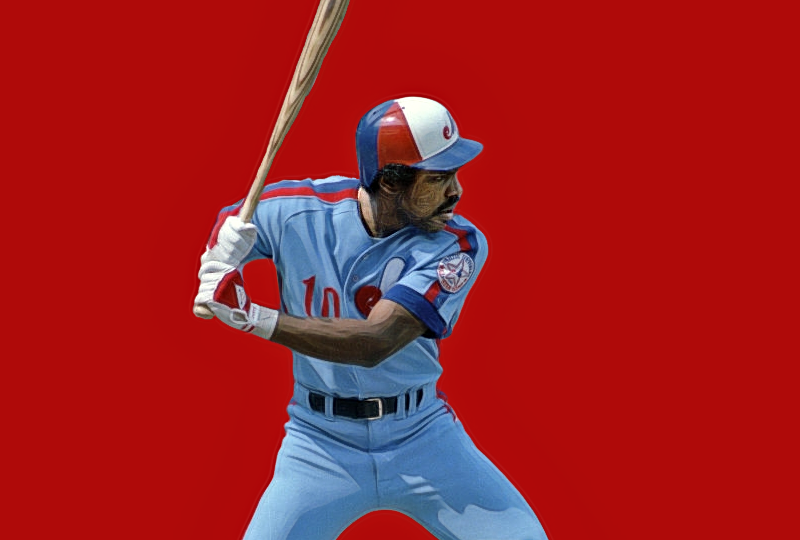
In the mid-1980s, the Montreal Expos were in danger of losing two-thirds of their outfield. Both Andre Dawson and Tim Raines were free agents after the 1986 season. They were All-Stars, two of the best players in the National League, with speed, power, and defense. They should have been the darlings of the free agent season, but neither got an offer. We now know the reason: collusion.
Peter Ueberroth was the worst commissioner baseball has ever had, which is saying something considering the collection of boobs and racists who have held that position. At any rate, Ueberroth presided over a famous meeting after the 1986 season, where he suggested to owners that they should stop paying outrageous sums of money for ballplayers. Ueberroth convinced the owners that they were hurting each other by driving up prices for the players on each other’s teams. He outlined a strategy that demanded 100 percent participation. Every owner agreed to not bid on free agents from other teams.
Dawson and Raines discussed the possibility of signing with the same team. Dawson wanted to go to a team that played on grass, Raines wanted to get paid like one of baseball’s superstars, which he was. Their agents had conversations with Braves owner Ted Turner, and a tentative deal was drawn up that would have resulted in both players signing with Atlanta.
The Braves were broadcast across the country via superstation TBS, and the prospect of both Dawson and Raines in an Atlanta uniform made Turner drool all over his bushy mustache. But then Ueberroth stepped in with his plan. The Braves stopped talking to Dawson and Raines, and the deals died.
Had the Braves signed the two Expos’ outfielders, their outfield would have been Raines in left, Dale Murphy in center, and Dawson in right. They would have played together in a tiny home run friendly ballpark. All three were still under 32 years of age, all three had several years ahead of them. They were all great defensive outfielders, all three could run and hit for power. They could have been the greatest outfield in baseball history. That’s what Peter Ueberroth took from us: the chance to see three great players, two future Hall of Famers and another who probably should be, play together in the same outfield.
Instead, Dawson gave the Cubs a blank check and asked them to write a number on it, just so he could play somewhere with grass under his feet. Raines withered on the vine, failing to get an offer from anyone. The winter passed, spring training passed, and the season started with Raines in civilian clothes. The rules dictated that he had to wait a month and could only negotiate with Montreal. He came back and had one of his best seasons.
The owners colluded again in 1987, but eventually they got caught and paid nearly half a billion to the players as a penalty.
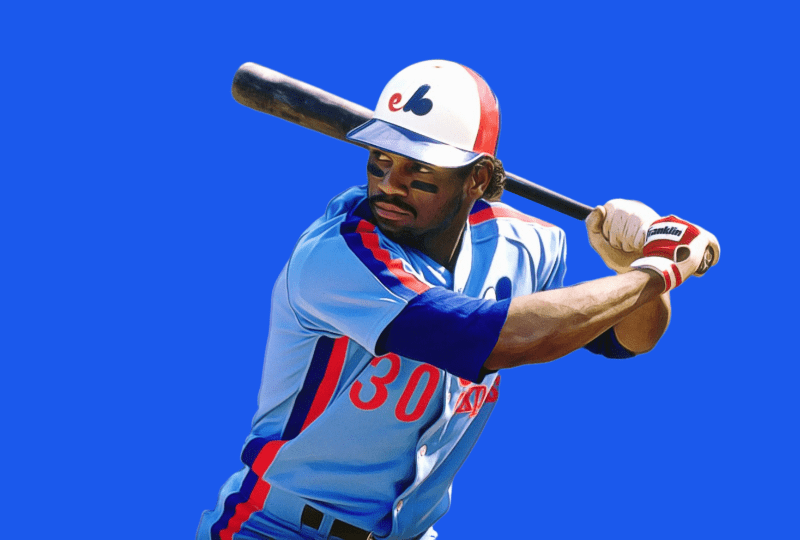
See the Dawson comment above for some prospective on Tim Raines in Montreal.
Raines lost 142 games due to labor stoppages and other factors outside his control, probably the biggest impact on any player from that era. In 1981 he was having a fantastic rookie season when the game halted for two months for a strike, in 1987 he was coming off his best season when team owners decided not to sign free agents, causing him to miss a month. In 1994-95, Raines was still playing good ball for the White Sox when 67 games were wiped off the schedule due to the strike. All those missed games probably cost Raines 100 runs, 150 hits, 50 stolen bases, and far more than the 20 RBIs he needed to get to 1,000 for his career.

This feature list was written by Dan Holmes, founder of Baseball Egg. Dan is author of three books on baseball, including Ty Cobb: A Biography, The Great Baseball Argument Settling Book, and more. He previously worked as a writer and digital producer for the National Baseball Hall of Fame, as well as Major League Baseball Advanced Media.
No reproduction of this content is permitted without permission of the copyright holder. Links and shares are welcome.
No posts found!
Only thing wrong with it is Pedro and Larry Walker shouldn’t be behind Dennis Martinez
yes they should be. look at the stats on baseball reference.
where is moises alou?
Moises Alou had 12.3 WAR for the Expos. This list is comprised of the Top 20 Expos (or Nationals) based on WAR.
Randy Johnson???????
Haha, love it. 🙂
I’m not sure I would include Ellis on this list. To my mind, he was the most disappointing Expo of all time. 5 tool player with a 5 cent brain. He should’ve been a HOF player. I would put Woody Fryman in there, even Jeff Reardon or Orlando Cabrera.